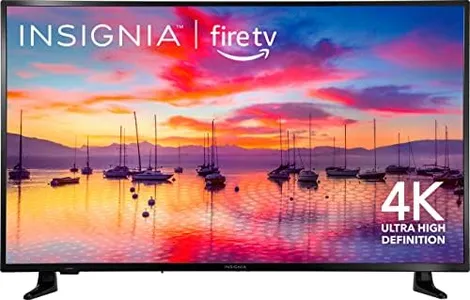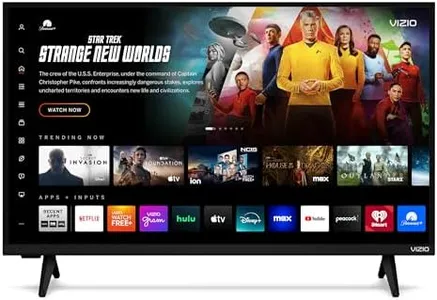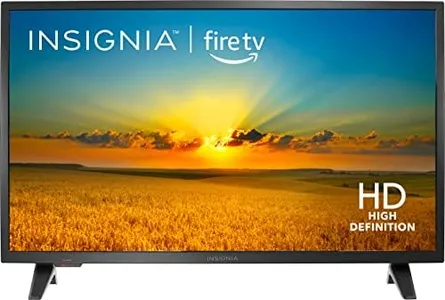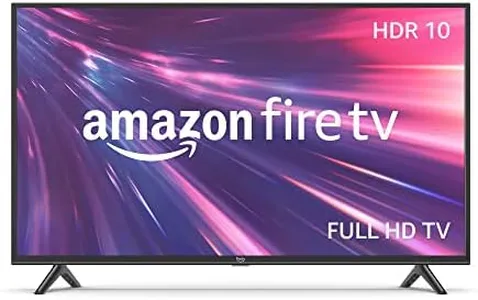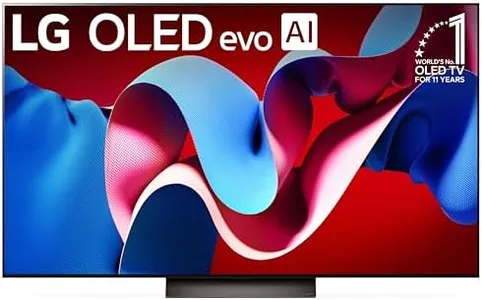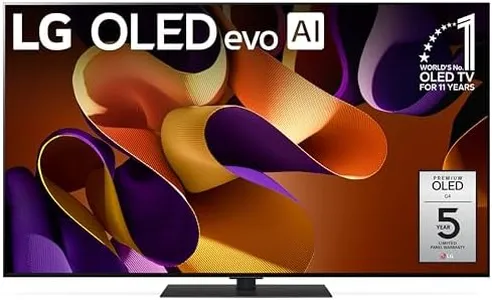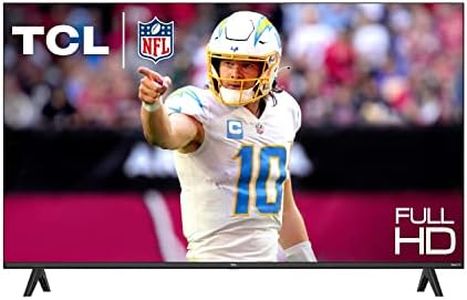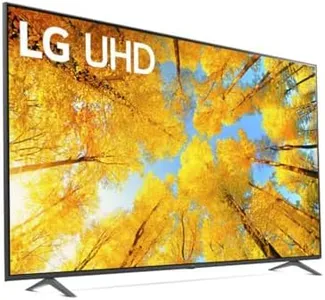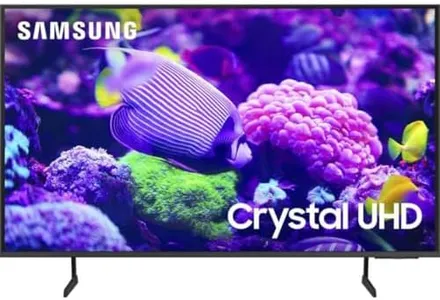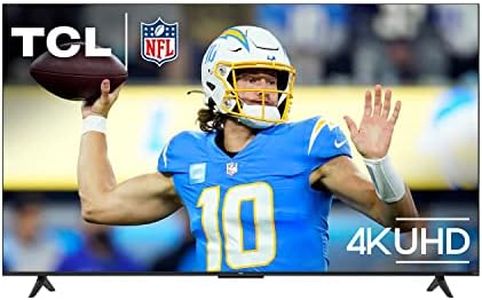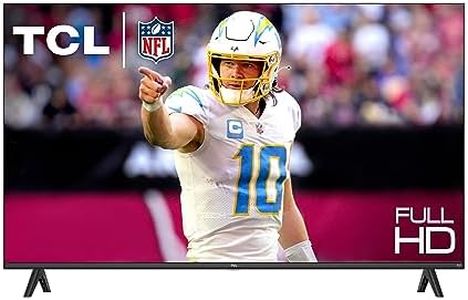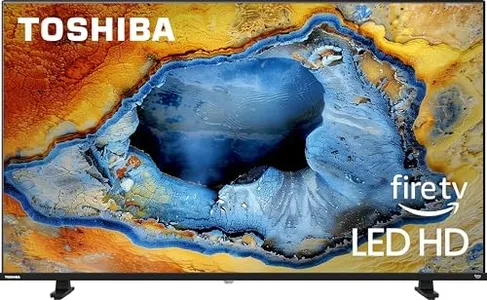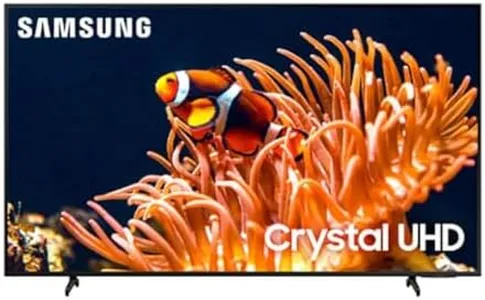10 Best Flat Screen Tvs 2025 in the United States
Our technology thoroughly searches through the online shopping world, reviewing hundreds of sites. We then process and analyze this information, updating in real-time to bring you the latest top-rated products. This way, you always get the best and most current options available.

Our Top Picks
Winner
INSIGNIA 50-inch Class F30 Series LED 4K UHD Smart Fire TV with Alexa Voice Remote (NS-50F301NA24)
Most important from
6467 reviews
The INSIGNIA 50-inch Class F30 Series LED 4K UHD Smart Fire TV offers a large 50-inch 4K Ultra HD screen, which delivers sharp and vibrant picture quality, making it ideal for movie buffs and TV show enthusiasts. The 4K resolution ensures you get four times the detail of Full HD, and it can upscale existing content to enhance picture quality. The LED display technology, while not as high-end as OLED, still provides bright and clear visuals at an affordable price point. With a 60 Hz refresh rate, this TV is suitable for standard viewing but may fall short for high-speed gaming or fast-action sports enthusiasts who prefer smoother motion handling.
The smart TV features, powered by Fire TV, give access to a plethora of streaming services like Netflix, Hulu, and Disney Plus, offering a wide variety of content. The inclusion of Alexa voice control is a convenient feature for hands-free operation, allowing users to search for content, control volume, and switch inputs with voice commands. Additionally, pairing with Amazon Echo enhances this hands-free experience.
On the audio front, the DTS Studio Sound aims to provide an immersive audio experience, though true audiophiles may still prefer an external sound system for superior audio quality. Connectivity options include Wi-Fi, supporting Wi-Fi 5 (802.11ac), which ensures decent streaming performance. However, the absence of more advanced refresh rates and premium audio features might be a limitation for some. This TV is best suited for users looking for a budget-friendly large screen smart TV with good picture quality and convenient smart features, but may not fully satisfy those with high demands for gaming or audio performance.
Most important from
6467 reviews
VIZIO 40-inch Full HD 1080p Smart TV with DTS Virtual: X, Alexa Compatibility, Google Cast Built-in, Bluetooth Headphone Capable, (VFD40M-08 New)
Most important from
3045 reviews
The VIZIO 40-inch Full HD 1080p Smart TV (VFD40M-08) offers a solid viewing experience with its Full HD resolution that provides clear and detailed picture quality. The Full Array LED Backlight enhances the contrast and color accuracy, making the visuals more vibrant and lifelike. The TV supports HDR10, which is beneficial for gamers as it enhances the details in games, and it has a built-in gaming mode that optimizes performance for consoles or PCs. The 60 Hz refresh rate is decent for regular viewing but might not be ideal for high-speed action scenes or intensive gaming.
It comes with various smart features, including built-in apps for streaming, access to over 275 free channels, and compatibility with Alexa, Google Assistant, and Apple Home, which makes it convenient for smart home integration. The inclusion of Bluetooth headphone capability is a nice touch for private listening. However, it lacks 4K resolution, which is becoming more standard in newer models.
Audio quality is enhanced with DTS Virtual: X, but it might still require a soundbar for a truly immersive experience. The 3-sided ThinFrame design ensures it looks good in any room, but at 40 inches, it may not be large enough for bigger living spaces. Connectivity options are ample with Wi-Fi and various ports, but it could benefit from more HDMI inputs. It’s a good option for those looking for a budget-friendly, smart TV with decent performance and smart features.
Most important from
3045 reviews
INSIGNIA 32-inch Class F20 Series Smart HD 720p Fire TV with Alexa Voice Remote (NS-32F201NA23)
Most important from
29330 reviews
The INSIGNIA 32-inch Class F20 Series Smart HD 720p Fire TV is an affordable option for those looking for a compact, smart TV. With a screen size of 32 inches, it fits well in smaller spaces such as bedrooms or kitchens. The 720p resolution, while not Full HD, still offers clear and decent picture quality for everyday viewing needs. The LED display technology ensures a bright and vibrant screen, though it might not match up to higher-end models in terms of color accuracy and depth.
A refresh rate of 60 Hz is standard for this category, suitable for casual viewing but not ideal for high-paced action or gaming. The built-in Fire TV experience, coupled with Alexa voice control, is a major plus, offering seamless access to a wide range of streaming services and apps. Alexa voice remote makes navigating and controlling the TV easy and convenient. However, this model lacks HDR (High Dynamic Range) capability, which enhances picture quality further, particularly in terms of color and contrast.
Connectivity options like Wi-Fi 5 (802.11ac) ensure stable internet connections, and support for Apple AirPlay is a handy feature for those with Apple devices. HDMI ARC is also included, simplifying audio connections with compatible soundbars or AV receivers. The audio quality is acceptable for a TV of this size but may require external speakers for a better sound experience. This TV is ideal for users looking for a budget-friendly, smart TV with essential features for streaming and everyday use.
Most important from
29330 reviews
Buying Guide for the Best Flat Screen Tvs
Choosing the right flat-screen TV can significantly enhance your viewing experience. With numerous models and features available, it's essential to understand the key specifications to make an informed decision. By focusing on these specs, you can find a TV that fits your needs and preferences, ensuring you get the best value for your investment.FAQ
Most Popular Categories Right Now
